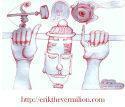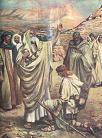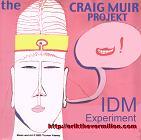Be Kind! Share with your Team, with your Family, with your Buddies!
Click The Button Now & Like This On Your Facebook Page!
Monday, September 17, 2012
What Is Included In Phlebotomy Coaching And What Do Phlebotomists Do?
Drawing blood samples isn’t just as easy as placing needles into your patient. You need to have the understanding to locate your patient’s vein and consider this adequate as an extraction location. The preparation of equipment is definitely required before beginning the venipuncture. The tourniquet, sterile syringe as well as needles, dry cotton balls as well as cotton balls moistened with alcohol ought to be ready. Phlebotomy training includes techniques in performing venipuncture which include correct placement of tourniquet, sterilization, determining the vein along with observation or palpation, as well as dispensing of the used syringe and needles.
The processing of blood samples aid the medical lab scientists with decreasing their TAT (Turnaround Time) which may be a good help to doctors with hastening their diagnosis. They also carry out POCT (point of care testing) meaning the phlebotomist brings the lab apparatus to the patient and tests are carried out at the bedside. Glucose checking is also included here and the patient even doesn’t have to undergo fasting.
The phlebotomy work description includes treating individuals by extracting blood sample for individuals with Polycythemia Vera (illness in which there's too much production of red blood cells, white blood cells, or platelets). The excess blood that's collected would be properly disposed based on what they've understood in their phlebotomy training.
When working in blood banks, their phlebotomy work description includes interviewing of donors, taking vital signs as well as testing donor blood samples. While the collection of blood for blood transfusions is the job for donor phlebotomy specialists.
The phlebotomy work description ought to be nicely explained before the start of the phlebotomy training course. The abilities needed to match the description ought to be harnessed before the end of the training. Continuing education would be recommended to learn methods regarding how to enhance your abilities as well as increase your understanding in the field of phlebotomy.















